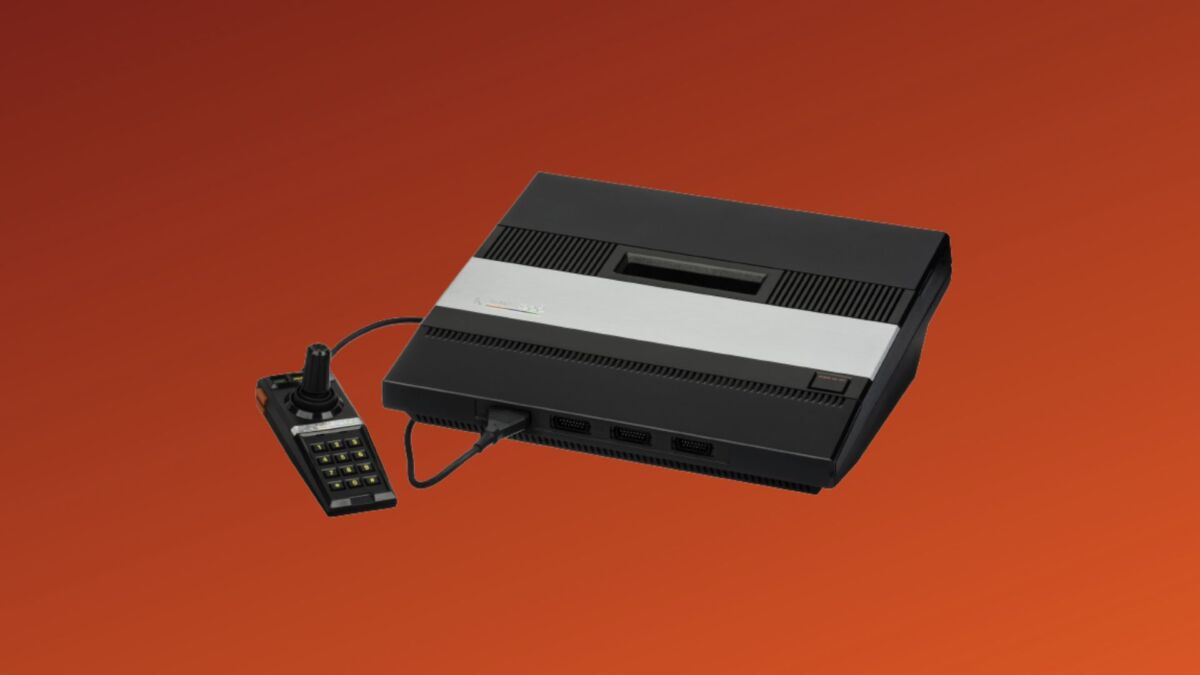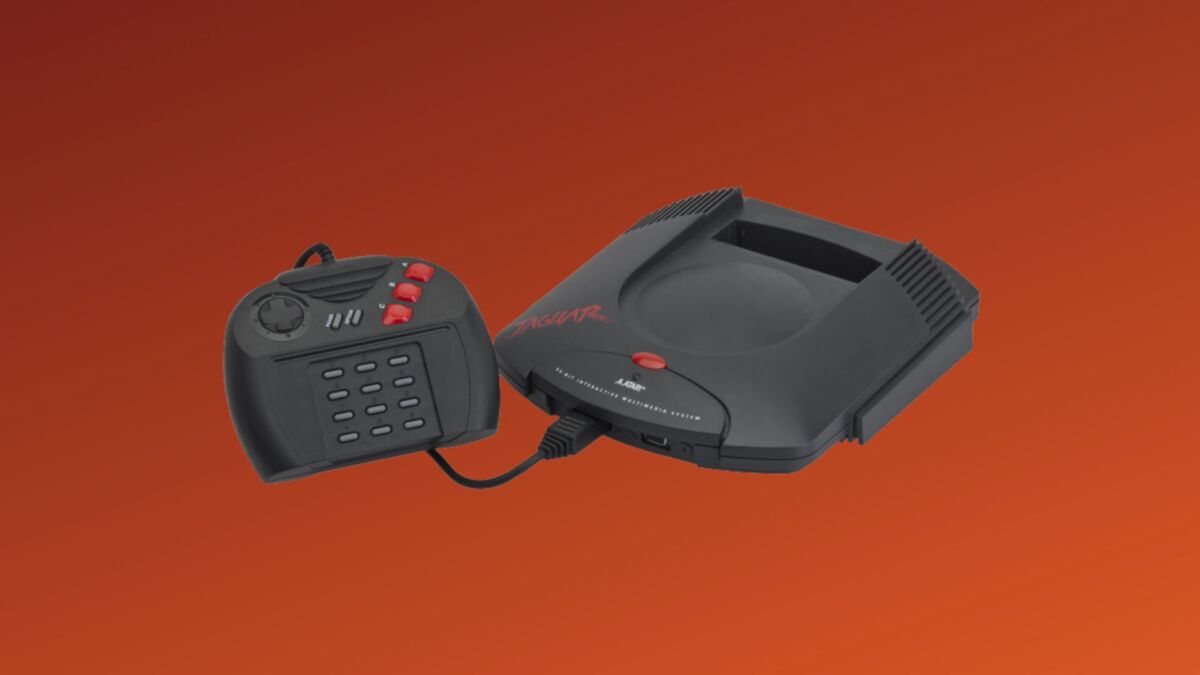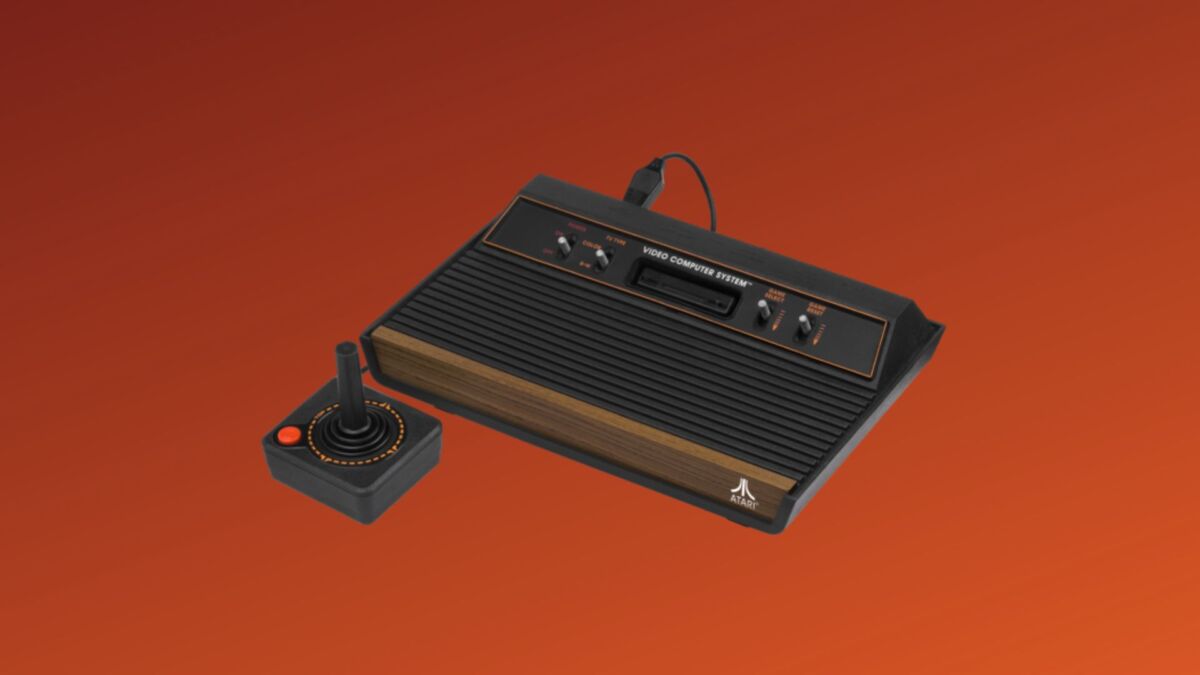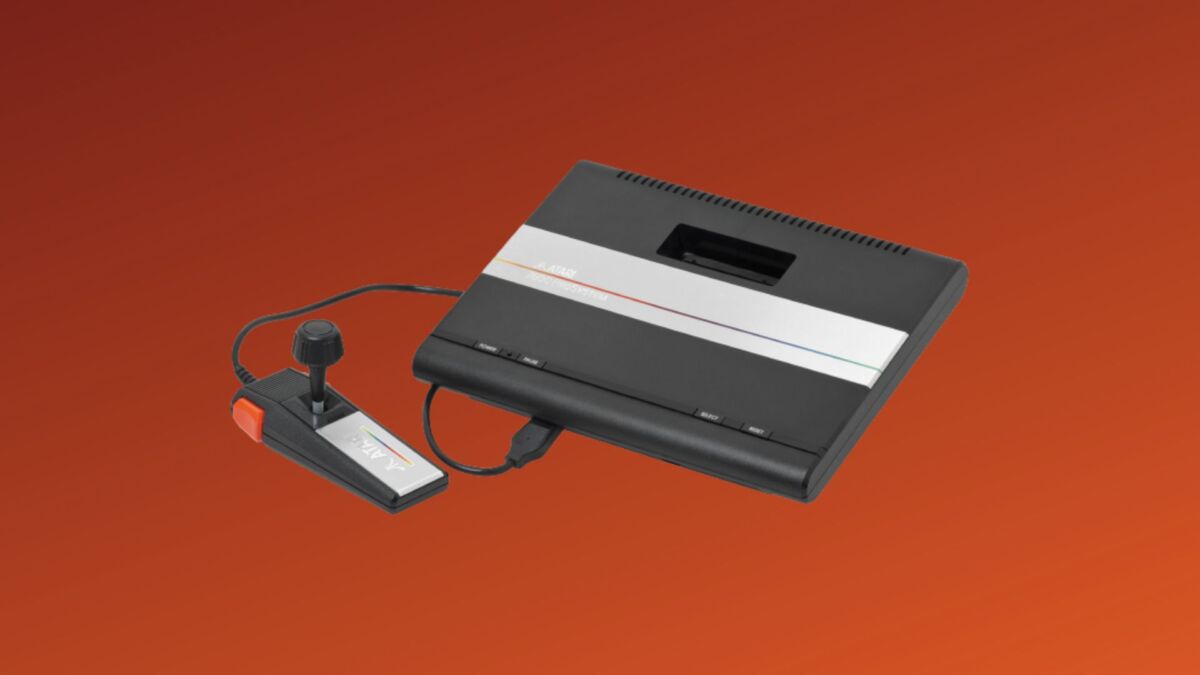While Atari may not be the company they once were, their historical value alone is difficult to summarize quickly. Telling that story with every Atari console ranked from worst to best will show you just how much the company achieved — and ultimately failed at.
The first company to launch a successful home console, Atari effectively built an industry through the 1970s with their home Pong console. Hundreds of Pong machines from just as many companies flooded the market, but Atari stayed ahead of virtually everyone by releasing the revolutionary 2600. The world was never quite the same again.
Regrettably, as the 80s came and went, poor decisions and an industry crash would hobble and eventually destroy Atari in its original form. Every Atari console ranked from worst to best creates a narrative of a company that got too greedy and made too many mistakes. Atari lives today but is mostly a home for nostalgia. There’s nothing wrong with that really, but as we look at every console Atari ever released to market, it’s hard to shake the wish that Atari could have remained at least a competitor with the likes of Sega and Nintendo.
NOTE: while it may have been partly marketed as a console, we are excluding the XEGS as it’s closer to a repackaged home computer than its own console, and it has very few of its own games not already available in Atari’s 8-bit library.
7. VCS

Release Date: December 14, 2020
Units Sold: 10000+
Atari’s back, baby. Well, sort of. Long out of the console game, and working as developers for the past several decades, Atari made a surprising return in 2021 with the release of the Atari VCS. Bundled with both a “classic” Atari-style joystick and a modern controller, the system comes bundled with more than one hundred games. Unfortunately, while some of these games are indeed among the best Atari games of all time, a lot of the bundled titles quite frankly suck.
And that would be fine if the VCS was particularly good at literally anything else. With minimal support and interest there’s really not much to get excited about with this thing. What’s interesting about the Atari VCS is its aspirations to be more than just a retro gaming console. In fact, it’s not really a console at all, since you can’t put games in it, but more of a mini-PC. The VCS promises you can use it for all manner of streaming content, including indie PC titles and even Xbox games. It mostly delivers on the promise, but with a price tag of $350+, there’s arguably better options for streaming and playing.
So, where does that ultimately leave the Atari VCS? It’s pretty niche, but a serious Atari/retro video game fan might be able to get behind Atari’s slow-but-nonetheless-tangible support, as well as access to Antstream Arcade, which includes games from the Amiga, Commodore 64, ZX Spectrum, and more. If that price tag could drop just a smidgen, the VCS might fare better when ranking every Atari console ranked next time.
6. Pong

Release Date: 1975
Units Sold: 200,000+
By the mid-1970s, Atari was riding high on the success of their first game Pong. One of the first commercial arcade games ever released, the literal hundreds of clones that sprung up in its wake compelled Atari to look for new ways to develop electronic games. A home version of their Pong game was the next logical step, with Atari Pong first being sold through Sears. After generating some 150, 000 sold units during the 1975 holiday season, Atari began releasing the system under their own name. The company was beginning to cement themselves as the leader in this developing new industry.
Atari didn’t spend too much time with the Atari Pong machine. Competitors once again flooded the market with ripoffs, and there were also companies and systems such as the Magnavox Odyssey to contend with. The sheer volume of Pong clones caused the fledgling industry to briefly crash, only to be resurrected in short order by the release of a little game called Space Invaders. The company would eventually shift from a home machine that could simply play one game to new ideas and concepts, including the medium-defining 2600.
So, while all of this is no doubt fascinating from a historical perspective, there’s really not much the Atari Pong machine can do when ranked against the rest of Atari’s systems. It’s a piece of history, and arguably where video games as we know them began. Pong is still at least briefly entertaining, but we’re still just talking about Pong.
5. 5200

Release Date: May 21, 1984
Units Sold: 1 million+
There’s a strong argument to be made that the Atari 5200 was the beginning of the end for the company. Riding high on the monumental success of the 2600, expectations were at a peak for the follow-up. What people got instead was one of the worst video game consoles of all time. An extraordinary failure in almost every regard, the 5200 began a downward spiral for Atari that would last for the rest of the 1980s and on into the 90s.
Unfortunately, the Atari 5200 largely deserves its bad reputation. Even the design of the console itself is a confounding mess of “Why?” and “What the hell is going on here?” Ditching the sleek simplicity of the 2600 altogether, Atari’s arrogance yielded a massive, odd-looking, and often broken mass of electronics with some of the worst controllers ever created. Setting the system up was confusing at best, and it was a small miracle if the controllers that came with the system didn’t break. You’re better off seeking out some third party alternatives to the 5200 controllers before you even fire the console up.
Is the Atari 5200 a complete loss? No. There are a number of very good titles for the 5200, assuming the system’s many internal issues don’t prevent you from even starting a game successfully. Gremlins, H.E.R.O., Moon Patrol, Space Dungeon, Pengo, and The Dreadnaught Factor were all examples of what the 5200 could arguably do better than its 2600 predecessor. However, a few gems aren’t nearly enough to save the Atari 5200 from some well-deserved scorn.
4. Jaguar

Release Date: November 23, 1993
Units Sold: less than 150,000
A bizarre, aggressive advertising campaign did little to help Atari survive the next stage of the console wars, with the 1993 release of the Jaguar being marked by strong early sales and a plethora of elaborate promises made by a company whose public perception by this point was in tatters.
Reception to the Atari Jaguar was decidedly mixed, and it never really got better from there. Some were impressed with the console’s power, with Atari purporting the system to be the first 64-bit console ever released (which, ehhh, kind of). Others were immediately unimpressed by games such as the bundled title Cybermorph (it’s alright), with additional criticism leveled at everything from the freakish controllers to the arduous loading times, to the growing realization developers had that programming for the Atari Jaguar was a living hell.
As a result, many promised games were simply never made. Several of the titles that did make it to stores suffered from those programming issues. Too many were rushed out the door so quickly that it was a miracle the games themselves didn’t cause the Jaguar to explode when you booted them up.
The Jaguar struggled along for three miserable years before collapsing. There was even a CD attachment that virtually no one purchased. By the beginning of 1996, Atari was effectively dead as a console manufacturer. Yet, despite all of this, the Jaguar does have several interesting games, with Alien vs. Predator, NBA Jam: TE, Doom, and Brutal Football proving that even a bad console like the Atari Jaguar could produce some gems.
3. Lynx

Release Date: September 1, 1989
Units Sold: 2 million
Although the Atari Lynx fared about as well as anything did for Atari in the 90s, the Lynx has a lot more going for it than the Jaguar, but it wasn’t perfect by any means. So bulky and heavy was this effort by Atari to take down the Game Boy that calling the system a handheld almost feels inaccurate.
Nonetheless, the console received pretty good reviews upon release. The color screen was praised for not only offering an utterly stunning visual experience, but the processor of the Lynx was also noted for being quite powerful. When the system was released in North America in 1989 and in Europe the following year, Atari seemed to have a genuine shot at a success story.
Which is why it’s all the more baffling that Atari marketed the Lynx so poorly.
While a $179.95 (that’s about $400 today) price tag probably would have hurt the Lynx’s chances at success anyway, it was really the fact that almost no one even knew the Lynx existed. Unless you were the kind of person making it a point to keep up with video game magazines, you probably weren’t going to hear about the Lynx very much. When you consider the system’s power and library, featuring such titles as Ninja Gaiden, Robotron 2084, Raiden, STUN Runner, and Hydra, it’s almost depressing to see the Lynx as badly as it did.
An updated Atari Lynx II came out in 1991, but no one cared, and the system was gone by 1995.
2. 2600

Release Date: September 1977
Units Sold: 30 million
Released in 1977, the Atari VCS (Video Computer System) wasn’t the first home console to market, but it was almost immediately the most successful and focused. It was a technical powerhouse for its time, and more importantly, it could play games besides Pong in bright, relatively vibrant colors. Nine games at launch and availability at Sears and Macy’s helped the VCS, later renamed the 2600, become an industry-defining hit that would be unequaled until the release of the Nintendo Famicom.
The Atari 2600 featured some of the earliest classics of home consoles, including Pitfall, Frogger, Space Invaders, Combat, Joust and many more. These games may be difficult for younger generations to initially appreciate, but many of these titles are still fun and well worth playing in this or any other form. Atari helped in a significant way to create the video game culture which still exists today, all the while fighting off a glut of competitors that tried to cash in.
The 2600 was doing just fine but making an arguably greedy deal with third-party game developers for royalties led to 2600 titles flooding and then drowning the entire market. Literally hundreds of games were produced for the system in the early 1980s, diminishing consumer confidence and choking out what good games were being released. Infamous releases like the 5200, E.T., and an astonishingly inept port of Pac-Man quickly put Atari on the defensive.
The success of the 2600 soon became irrelevant, but we can appreciate today just how innovative and impressive it really was.
1. 7800

Release Date: May 1986
Units Sold: 1 million
The Atari 2600 is more historically significant than the 7800, but for overall game quality, system specs, and sheer potential, the 7800 comes out on top of every Atari console ranking. The console may have been something of a “too little too late” situation for Atari, with it being released to stores in the shadow of Nintendo’s growing dominance, but it really was the best of what Atari could achieve at their peak.
Despite failing to outsell even the Sega Master System, Atari’s 7800 boasted backwards compatibility at a time when that wasn’t something people really thought about. You had the entire 2600 library at your disposal, and then the games made exclusively for the 7800. Many 7800 titles are among some of the best games ever released on an Atari console. That list includes Pole Position II, Joust, and Desert Falcon.
What happened to the Atari 7800? Jack Tramiel happened. The man who founded Commodore International believed home computers had a future where home consoles did not. The 7800 was ready to go by 1984, but due to a variety of internal problems occurring at the same time as the video game market crash, it wasn’t released until 1986. By then, it was almost pointless.
Dwindling support from Atari meant few 7800 releases occurred during its original lifespan. But what is here is quite frankly incredible, and arguably tragic in that particular context. Atari should have been a genuine rival to Nintendo or at least a viable second option until Sega got their act together with the Genesis. Instead, the Atari 7800 emphasizes everything Atari could have been.
READ NEXT: Ranking the Scream Movies From Worst to Best
Some of the coverage you find on Cultured Vultures contains affiliate links, which provide us with small commissions based on purchases made from visiting our site.
